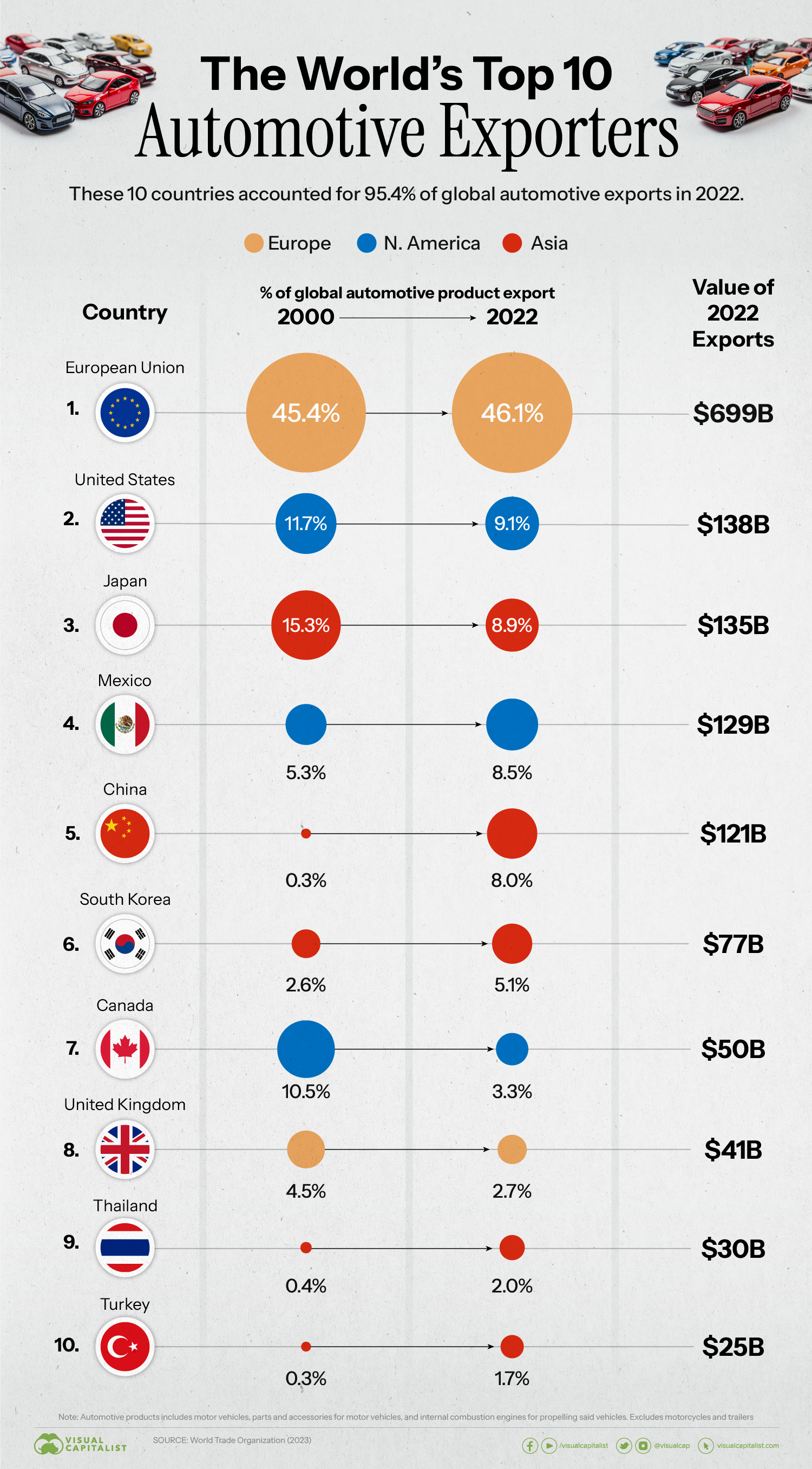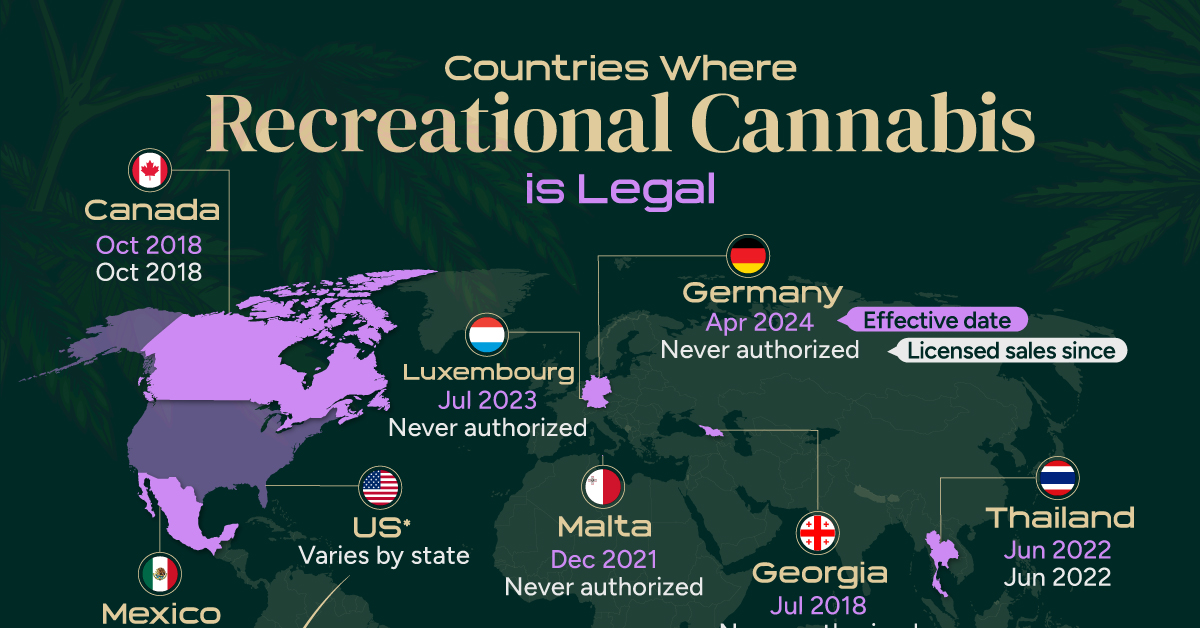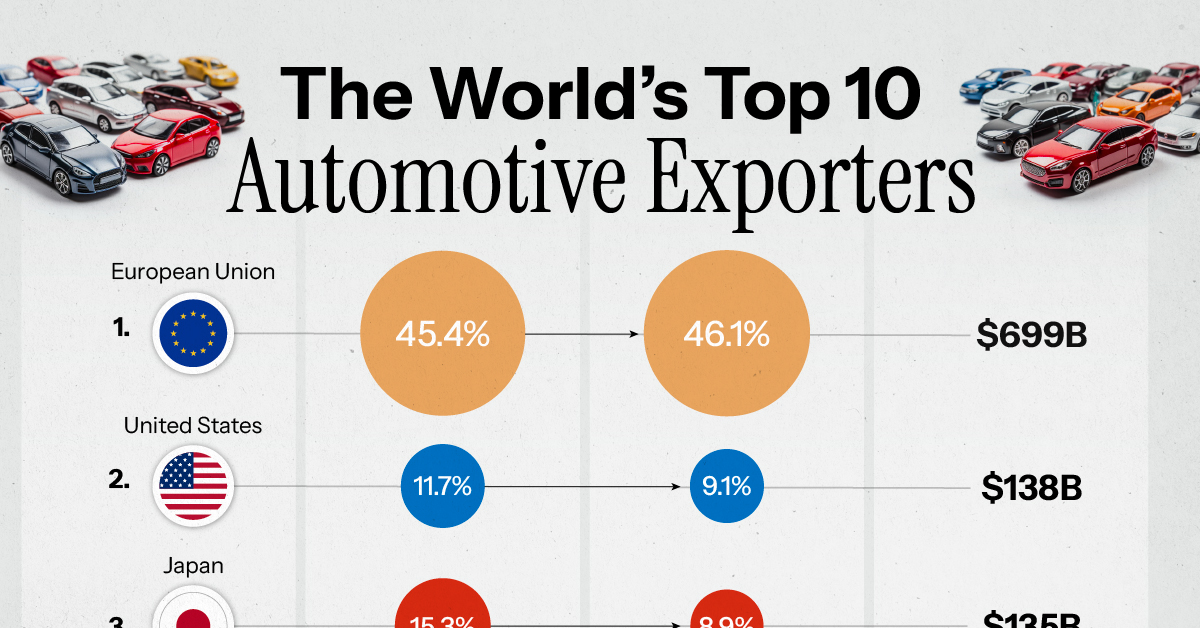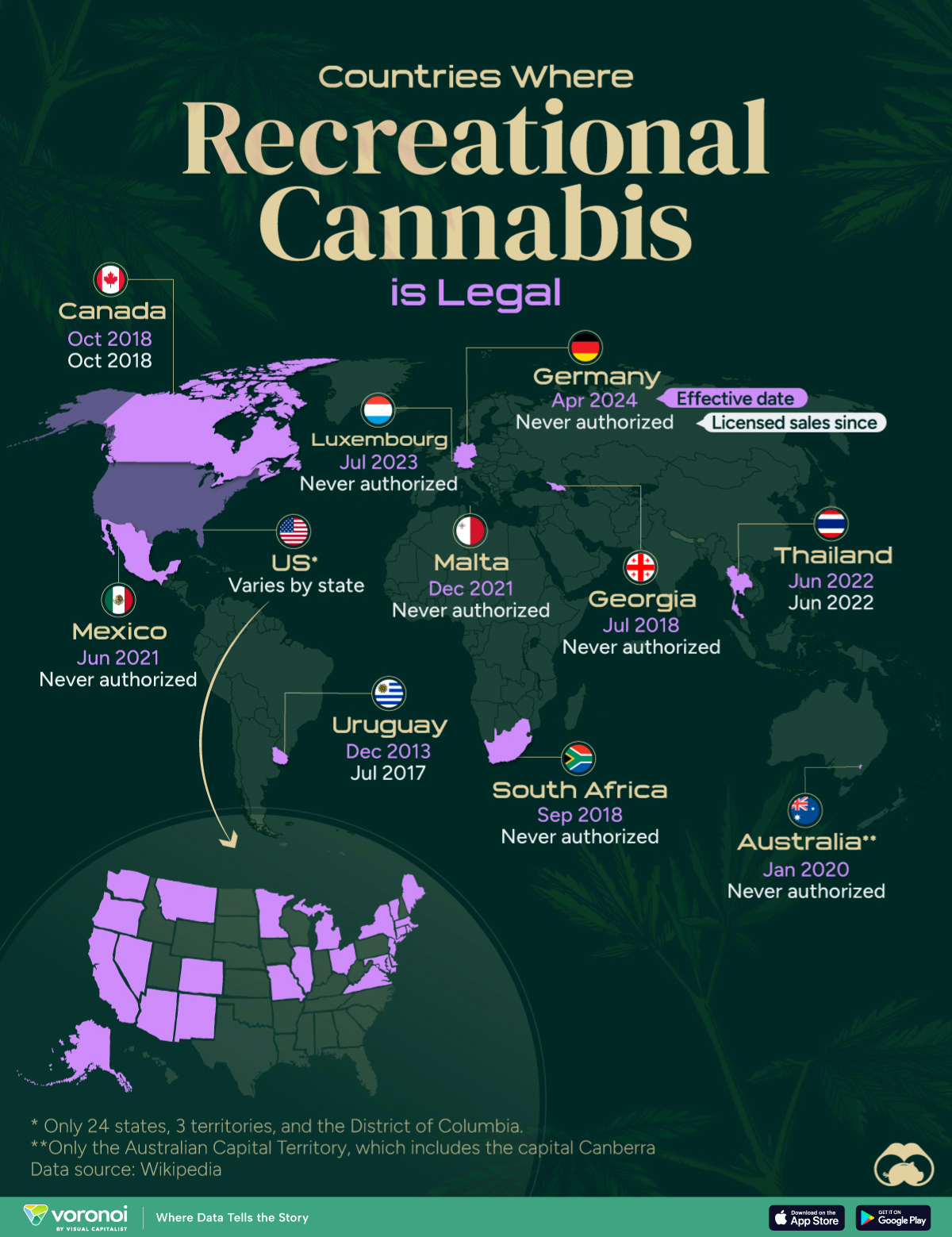Misc
Ranked: The World’s Top 10 Automotive Exporters (2000-2022)

Ranked: The World’s Top 10 Automotive Exporters
According to the European Automobile Manufacturers’ Association, over 85 million motor vehicles were built around the world in 2022.
In this graphic, we add context to this massive figure by ranking the world’s 10 largest automotive exporters. The list is based on data from the World Trade Organization (WTO) and includes countries from nearly every corner of the world, highlighting the global nature of the industry.
Top 10 Exporting Countries
The data we used to create this graphic is included in the table below. It represents each country’s share of the total export value of global automotive products in both 2000 and 2022.
“Automotive products” are defined by the WTO as motor vehicles, parts and accessories for motor vehicles, and internal combustion engines for propelling said vehicles. This grouping excludes motorcycles and trailers.
| Exporter | 2000 (% of world exports) | 2022 (% of world exports) | Change (pp) |
|---|---|---|---|
| 🇪🇺 EU | 45.4% | 46.1% | +0.7 |
| 🇺🇸 U.S. | 11.7% | 9.1% | -2.6 |
| 🇯🇵 Japan | 15.3% | 8.9% | -6.4 |
| 🇲🇽 Mexico | 5.3% | 8.5% | +3.2 |
| 🇨🇳 China | 0.3% | 8.0% | +7.7 |
| 🇰🇷 South Korea | 2.6% | 5.1% | +2.5 |
| 🇨🇦 Canada | 10.5% | 3.3% | -7.2 |
| 🇬🇧 UK | 4.5% | 2.7% | -1.8 |
| 🇹🇭 Thailand | 0.4% | 2.0% | +1.6 |
| 🇹🇷 Türkiye | 0.3% | 1.7% | +1.4 |
| Total | 96.3% | 95.4% | -- |
From this list we can identify which countries have experienced the most growth or decline over the past 22 years.
Countries With the Most Growth Since 2000
The automotive exporters that grew their share of global value the most since 2000 are China (+7.7 pp), Mexico (+3.2 pp), and South Korea (+2.5 pp).
There are clear drivers behind each of these growth stories.
For example, China became the world’s largest car market back in 2009, which accelerated the growth of its domestic automakers. China is also home to some of the world’s biggest automotive suppliers, including Weichai (diesel engines), Hasco Automotive (drivetrain and air conditioning systems), and CATL (EV batteries).
Mexico, on the other hand, has grown its auto industry by enticing global brands to construct their factories there. The country’s competitive edge includes cheaper labor and a land border to the United States.
Finally there’s South Korea, whose growth is largely attributed to Hyundai Motor Company. The Seoul-based automaker recently became the third largest on a global basis, trailing only Toyota and Volkswagen.
Countries With the Biggest Decline Since 2000
The automotive exporters that declined the most since 2000 are Canada (-7.2 pp), Japan (-6.4 pp), and the U.S. (-2.6 pp).
Canada’s auto industry has experienced a steady decline in recent years, though new EV-related investments could turn things around. In March 2022, Stellantis and LG Energy Solutions announced the construction of a $3.5 billion EV battery plant in Windsor, Ontario.
Canada’s automotive industry is largely concentrated in the province of Ontario, which neighbors Michigan, the top state for U.S. car production.
United States
Mapped: Countries Where Recreational Cannabis is Legal
In total, only nine countries have fully legalized recreational cannabis use.

Countries Where Recreational Cannabis is Legal
This was originally posted on our Voronoi app. Download the app for free on iOS or Android and discover incredible data-driven charts from a variety of trusted sources.
In 2024, Germany became the third European Union country to legalize cannabis for personal use, following Malta and Luxembourg.
Here, we map the countries where recreational cannabis use is allowed as of April 2024, based on data from Wikipedia.
Limited to Few Countries
In total, only nine countries have legalized recreational cannabis use nationwide. However, just a few of them have licensed sales.
| Country | Effective date | Licensed sales since |
|---|---|---|
| 🇺🇾 Uruguay | December 2013 | July 2017 |
| 🇬🇪 Georgia | 30 July 2018 | Never authorized |
| 🇿🇦 South Africa | 18 September 2018 | Never authorized |
| 🇨🇦 Canada | 17 October 2018 | 17 October 2018 |
| 🇲🇽 Mexico | 28 June 2021 | Never authorized |
| 🇲🇹 Malta | 14 December 2021 | Never authorized |
| 🇹🇭 Thailand | 9 June 2022 | 9 June 2022 |
| 🇱🇺 Luxembourg | 21 July 2023 | Never authorized |
| 🇩🇪 Germany | 1 April 2024 | Never authorized |
| 🇺🇸 U.S. | Varies by state | Varies by state |
| 🇦🇺 Australia | Varies by jurisdiction | Never authorized |
At the federal level, cannabis is still considered an illegal substance in the United States. That said, individual states do have the right to determine their laws around cannabis sales and usage. Currently, cannabis is allowed in 24 states, 3 territories, and the District of Columbia.
Interestingly, the oldest legal text concerning cannabis dates back to the 1600s—when the colony of Virginia required every farm to grow and produce hemp.
Since then, cannabis use was fairly widespread until the 1930s when the Marihuana Tax Act was enforced, prohibiting marijuana federally but still technically allowing for medical use.
Today, the U.S. cannabis market is a $30 billion business. By the end of the decade, that number is expected to be anywhere from $58 billion to as much as $72 billion.
Similar to the U.S., Australia does not allow the use at the national level, but cannabis can be used legally in the Australian Capital Territory, which includes the capital Canberra.
-

 Markets6 days ago
Markets6 days agoMapped: Europe’s GDP Per Capita, by Country
-

 Energy2 weeks ago
Energy2 weeks agoMapped: The Age of Energy Projects in Interconnection Queues, by State
-

 Mining2 weeks ago
Mining2 weeks agoVisualizing Global Gold Production in 2023
-

 Markets2 weeks ago
Markets2 weeks agoVisualized: Interest Rate Forecasts for Advanced Economies
-

 Markets2 weeks ago
Markets2 weeks agoThe Most Valuable Companies in Major EU Economies
-

 Markets1 week ago
Markets1 week agoThe World’s Fastest Growing Emerging Markets (2024-2029 Forecast)
-

 Markets1 week ago
Markets1 week agoVisualizing Global Inflation Forecasts (2024-2026)
-

 Politics1 week ago
Politics1 week agoCharted: What Southeast Asia Thinks About China & the U.S.











